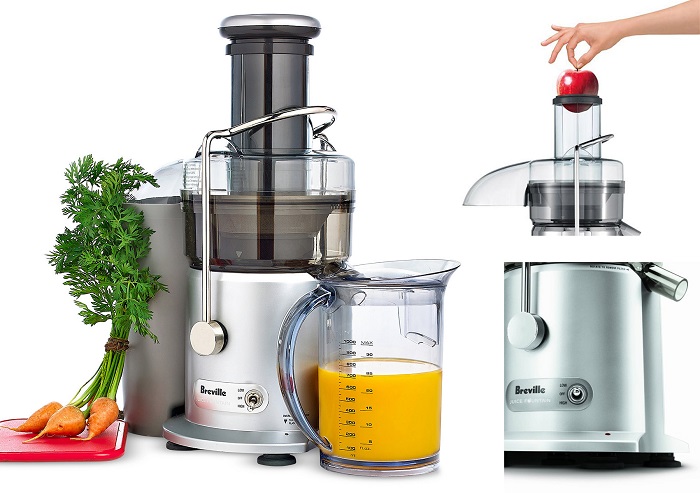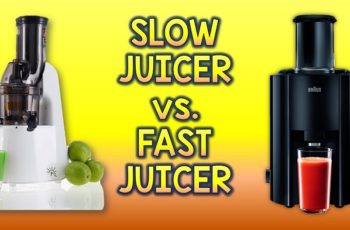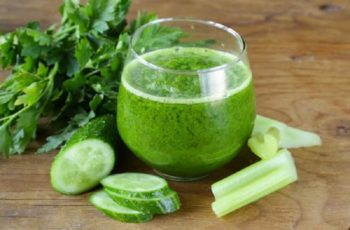Table of Contents
Steps by Steps on How to Use a Juicer? Good Tips and Guides in 2021
As a health-conscious individual, you know the importance of having healthy lifestyle habits. One way to make sure that your diet is up to par with these requirements is to use a juicer. A juicer enables you to drink fresh and nutrient dense juice, which can provide many benefits for both your physical and mental well-being.
However, before using it for the first time or buying one in general, there are some things that you need to keep in mind so that everything goes smoothly and according to plan. To help you out on this journey, we have created this blog post with tips on how to use a juicer best as well as what sort of products should be purchased when getting started with juicing at home.

1. What is a Juicer?
Before delving into the details of how to use a juicer, it is important to first know what exactly captures your eye when you are on the market for one of these machines. The device works in three basic ways :
Extraction:
During this step, the fruit or vegetable is pressed through a grater so that its juice can be collected and stored separately from the pulp. In most cases, users have the option to separate these two before putting them inside their machine, but there are also some products that offer pre-separated pulp and juice containers which need only to be put together before using them as a whole.
This latter design proves useful especially when wanting to make more than one juice at a time with different ingredients because you can then just switch containers instead of having to clean up the grater before using it again.
Re-extraction:
In this phase, the juice is filtered through a sieve so that any excess pulp and fiber particles are removed from the mix. As mentioned previously, some manufacturers have already combined these two elements in a single container which keeps everything ready for use right off the bat.
However, there are also products with separated pulp and juice bins which require cleaning between every usage when wanting to avoid cross contamination from one fruit or vegetable mixture into another.
In this sense, it’s crucial to always keep track of what you’re doing and check if your machine comes with sorted containers before getting started your first recipe or else risk getting pulp in your juice and vice versa.
Homogenization:
During the final step, the juices that are collected are sent through a sieve once again so that any sediment which may occur from the re-extraction process is removed. In most cases, this final filtration is pretty much optional but there are some products that do not offer a filtered juice alternative which can totally alter their taste just by using them on their own without any added ingredients whatsoever.
2. How to use a Juicer?
Since getting one of these machines involves several different tasks and components, there is no single answer to how to use a juicer best because every product will require its own guidelines depending on what makes it stand out the most and how you want to use it. However, there are still a few steps that you can take regardless of the model you get to prepare yourself for all types of eventualities as follows :
Step 1:
Always wash your fruits and vegetables thoroughly before putting them through your juicer in order to reduce the risk of spreading any bacteria or germs from one product to another.
Washing them with water is usually enough even when using organic products but if you want, some devices come with a separate container where you can put lemon juice and add your produce so that they are cleaned right off the bat without having to stress about disinfecting anything afterwards.
Step 2:
Check which accessories do your machine comes with before starting it up so that everything goes according to plan and there aren’t any unplanned stops in the middle of your recipe which could lead to a total mess.
There are some products that come with cleaning brushes for easy and proper cleaning while others may offer separate containers to prepare different juices without having to switch everything around when wanting to make more than one at a time.
Step 3:
As mentioned previously, there are also supplements like vitamin C or electrolyte powders which can be added to the mix so that you get optimal nutrition levels just by using them on their own without adding anything else afterwards.
However, this step only applies if you have chosen an electrical model with pre-separated pulp and juice bins since they already include these powders inside their packages and all you have do is take them out before putting them through your device.
Step 4:
Always use the right amount of ingredients for your machine and follow the same measurements when wanting to prepare different recipes in order to avoid putting in too much or not enough of anything because this can totally alter their taste from what you originally had imagined.
In most cases, these guidelines are already indicated on the back of each package that comes with its own recipe so you don’t have to worry about it but proper measuring is always a welcome habit no matter how attractive some concoctions may sound at first sight.
Step 5:
As part of our cleaning tips to try and keep everything as neat as possible after having used your juicer, it’s always important to remove all parts from their respective places so that they can be properly cleaned and put away once they are ready.
This can be done faster or slower according to how many components you have to wash but it is always a good idea to try and make this step as fast as possible so that you don’t end up forgetting about them by the time you want to go back on using your machine.
Step 6:
Lastly, always remember that these kinds of products are not meant for making dairy-based drinks or hot beverages inside your house at any time whatsoever so never get tempted into trying such recipes again in order to avoid inconveniences down the road like having to replace certain parts because of overheating due to extended usage periods.
In conclusion: Getting one of these appliances for yourself can be quite satisfying when handled properly, especially if you take all of these tips into account so that they can be as useful as possible when trying to juice your favorite fruits and vegetables. Above is the answer for How to Use a Juicer? Now, let’s move to some tips and guides on using Juicer as below:
Tips and guides on How to use a Juicer.

1. What we consider before buying a Juicer?
If you love vegetables and fruits in your diet but don’t like the idea of chewing on them, then you might want to try out a juice extractor instead since these kinds of appliances can turn your favorite ingredients into tasty drinks in just minutes.
While there are many models available for sale, all of which come equipped with numerous functions and benefits that may vary from one product to another, it’s always a good idea to take some time off in order find the best juice extractor for your needs.
This is why we decided to do research online and check what some of the most popular models have to offer today so that our readers could benefit from this information as well when trying to make such an important decision about their own lives. Here are some of the most important aspects to consider when looking for a quality juice extractor.
Size:
The size of the appliance is definitely something to take into account especially if you don’t have too much space available on your kitchen countertop or inside your cupboards. As such, there are some models designed for small kitchens while others can be stored away easily because of their smaller sizes.
Even though larger products tend to provide more power and efficiency, they may not be as easy to store or place on crowded counters so keep these aspects in mind before making any final decisions about which model suits you better.
Power:
In order to extract juice from different fruits and vegetables in no time at all, certain appliances come extra power levels that can also determine the speed at which your drinks will be produced.
More power doesn’t necessarily mean that the product will cost more so consider this aspect when trying to choose between different models instead and you will certainly find a perfect match for your own needs in no time.
Juice yield:
Since even the most powerful appliances won’t extract as much juice as they would otherwise if the ingredients weren’t properly cut into small pieces, all of them come equipped with their own pulp containers.
This means that over time you might have to empty out these components before placing any new fruits or vegetables in there but it is certainly better than having to keep adding more of them inside just to have enough for a single glass.
Mastication (Shearing action):
Since not all products come with the same mastication levels, it is always a good idea to check how fine the drinks will be once they are extracted. This way you can also determine which pulp container will need to be emptied first before making further purchases.
Clean up:
Last but certainly not least, even though most appliances should wash themselves easily thanks to their non-stick materials and removable parts, all of them come with some kind of manual so that users can familiarize themselves with this process before starting out.
We advise our readers to always follow safety instructions when handling these appliances no matter what brand or model they choose in order to avoid any potential accidents at home. With these tips in mind we hope that getting your own appliance won’t be such a big challenge anymore and that you will be able to enjoy the benefits of these kinds of appliances for many years to come!
2. What is the advantages of a Juicer?
A juice extractor is a kitchen appliance that allows you to quickly prepare fresh fruit and vegetable juices right in your own home. They have become very popular in recent years, largely because of the growing awareness about healthy eating habits.
While some people don’t consider drinks like these as an alternative or even an addition to solid food, they are actually much healthier than most alternatives since they offer a lot more nutrients than what comes out of cans or bottles. Of course this means that they also cost more so it’s important to find the best model for your own needs if you wish to make them regularly at home.
If you’re tired of paying too much money for nutritiously-packed juices from your local market then we recommend getting a decent appliance instead since they don’t take up too much space in the kitchen and offer a large variety of different kinds of drinks.
They can also be used to whip up some smoothies, sauces or even baby food for your little ones without having to look for other options around the house so make sure you pick a quality model if you wish to use it as often as possible!
3. What makes a good juicer?
Even though all juice extractors are supposed to function exactly the same way, there are some aspects that set them apart from each other depending on their price tags and power levels. Simply put, by taking into account these factors before getting one you will certainly find a product that meets your own expectations.
Here is what we recommend our readers pay attention to before making any kind of final decisions:
Health:
Since this is the entire purpose of a juice extractor, it’s only fair to say that all models on the market right now come with their own health benefits so you shouldn’t worry too much about this aspect unless you are specifically looking for something specific.
For example if you already have a steamer at home then getting an appliance that can do both these things might not be as good of an idea since they don’t offer quite as many nutrients and pulp levels as what you would get out of truly high-quality juicers.
Juice yield :
It is actually very easy to determine just how good a particular model is at extracting juices from fruits and vegetables but doing so will require a little bit of research on your part since there are no actual measuring units used to describe this.
The best way to judge is by comparing their numbers against the pulp that you would normally get out of these ingredients and then also taking into account that some manufacturers might not always list these numbers in a completely honest manner so make sure you run a few tests before making any decisions!
Noise levels:
Even though high-quality appliances have come a long way over the past few years, they will still be louder than what you are probably used to when it comes to kitchen appliances in general.
This is usually something that doesn’t bother most people but enough exposure can lead to severe headaches (especially if drinking juices for breakfast) so we recommend checking up on some reviews by third-party sources if you’re uncertain about how loud a particular model might be.
Cordless:
Some people like to store their juice extractors at the back of a kitchen cabinet so it’s only natural that cordless models have become more and more popular in recent years.
Of course they do cost more than traditional alternatives but depending on your individual needs this can either be an advantage or disadvantage, although we recommend checking up on some reviews before deciding which one will work for you, as there are actually quite a few benefits to having longer power cables attached to these appliances.
Warranty:
Even though most manufacturers try their best to make sure that all products come with decent warranties, it is still always a nice feeling when you find one that covers the entire appliance and not just parts of it like most other models do.
At the very least we recommend going for a product with a coverage of at least 2-3 years or more but as long as you carefully read through each warranty clause to make sure there are no loopholes, then this is usually something that won’t be an issue.
4. How many Type of Juicer in the market now?
Generally speaking, there are two main types of juice extractors on the market right now and here is a quick look at both of them:
Centrifugal Juicer:
These are generally the most affordable type you can find but also have some lower-quality parts that might need replacing after a few months or so. Their construction usually involves using a fast-spinning blade to drive through the fruits and vegetables and then use metal strainers to push out the juice while retaining any pulp.
Centrifugal juicers tend to offer more features than masticating options because they are mostly used by people who don’t really care about nutrition but instead want something for their home bar or just to drink general.
Masticating Juicer:
These are a little bit more expensive than regular centrifugal models but they also offer much better juice quality and some additional features that can make life easier for you. Their design is slightly different in that they come with either single or dual gear mechanisms which slowly push through ingredients and then press them into a pulp-free juice.
If you’re looking at doing serious juicing for your daily needs then getting one of these would be the best investment as most of even higher grade models will easily last for over 10 years!
5. How to clean a Juicer?
Depending on what kind of juicer you have and how often you use it in general, the time needed to clean up your kitchen appliances will vary.
This is usually a job that should be done as soon as possible after each use to avoid unwanted bacteria from building up but with most models all you’ll really need to do is add some warm water and dish soap into the main compartment where all those chunks are before turning on the device for a few seconds.
After this rinse everything out thoroughly and leave it next to an open window or inside a cabinet for at least 3-4 hours so that it can air dry without creating any unpleasant odors or gunk.
6. Common mistakes when using Juicer?
The biggest mistake that most people make when using a juicer is trying to use it too much at a time. This is usually because they see that there are so many advantages to getting a juice extractor and want to get started as soon as possible but from an efficiency standpoint this just isn’t the best thing, especially if you have delicate ingredients like berries or just about anything else in particular.
We recommend getting a smaller model for your home bar which should be able to handle enough fruits or vegetables for up to 3-4 servings but only put in around 2-3 pieces at once, otherwise the device will either need more time than usual or might not work quite right.
Common question related with How to Use a Juicer FAQs

1. The juicer is slow?
Answer: If the motor seems to be working a little bit too slowly then there might be some limes or other issues with hard ingredients still in the machine, but otherwise this usually means that you’re putting in more fruits or vegetables than it can handle at once.
Check the manual and see what kind of wattage your specific model uses as well as how much each ingredient should weigh since most modern models are pretty great at telling us when certain ingredients are either too small or even oversized!
2. There’s really no difference between centrifugal and masticating juice extractors?
Answer: Most people who have never used a quality masticating juicer before find themselves wondering why these models cost so much more than the regular centrifugal ones that have been on the market for years.
The main reasons are usually that the materials used to build them are better but beyond this there is also a whole range of other features that make higher grade models much more efficient in general!
3. How Much Does a Juicer Cost?
Answer: This all depends on what kind of model you’re looking at, as well as whether or not you’ll be using it for things other than just juices. If you want something simple then expect to pay around $50-100 but if we’re talking about serious masticating juicers then they will easily cost upwards of $500 and some even come with separate extractors meant for soy milk or almond butter.
To put this in perspective a lower grade centrifugal juicer will usually start at around $50 and still work great, but for the real deal you’ll need to spend about 5 times this much.
4. How to make smoothies with a juicer?
Answer: Most people who are interested in making high quality juice will be happy about this question because for some reason the idea of getting two appliances seems pretty silly to most people, as if there was something wrong with having more than one kitchen gadget that can do the same thing!
In any case, most blenders have 2-3 cup containers which should work fine for up to 3 servings so feel free to jump right in here and experiment away since we doubt you’ll get worse results than what you’d get from a certain famous brand of blender…
5. Will a Juicer change my life?
Answer: Not by itself no, but if you’re serious about your health then finding time each day to make a smoothie or even just a juice will make it much easier to get all of the things that you need from whole fruits and vegetables into your system.
If this is something that sounds important but feels like more than you can handle then pick up an entry level model for around $50-100 which should be able to process enough ingredients for 3 servings per day, but please use common sense when choosing how long each ingredient needs to sit there because some of them might not need to stay inside the machine for long!
6. The juicer is loud?
Answer: Most centrifugal models will produce a sound level of around 80-100 decibels, which is about as loud as a running vacuum cleaner and enough to wake up some people if they’re especially sensitive.
These models usually have a range between 10,000-15,000 RPMs (rotations per minute) so you can expect them to be pretty noisy in general. Masticating juicers are much more silent although the pricier ones might still make some noise while working.
7. What kind of ingredients should I put in my smoothie or juice?
Answer: This all depends on what kinds of recipes you’ve been following but we’d recommend for most people that they include at least 3 servings of fruits and vegetables before even thinking about adding anything else like protein powder, milk or a sweetener.
Please note that it’s not recommended to use fresh wheatgrass or barley grass in the juicer, but you’ll need to drink this kind of juice quickly since exposure to oxygen will destroy most of its health benefits.
8. How do I clean my Juicer?
Answer: Most people who dread having to clean their appliances because they think it takes too long will love masticating juicers since these are much easier to wipe down after each use! There is still one extra step which is washing off all of the pulp from inside the machine but if you choose a model with removable parts then this step will be pretty easy as well.
9. What are the extra costs?
Answer: Depending on which type of juicer you end up choosing, you’ll also need to buy fruits and vegetables if these aren’t already part of your regular diet. You can expect to pay around $1 for every 2 servings that you make, or about $30-40 per week at most unless you start adding specialized ingredients like wheatgrass juice which tend to be more expensive than buying them from a store.
10. How often do I have to replace my Juicer?
Answer: This is another aspect where people who own centrifugal models will get much better mileage since it’s very common for these types of juicers to last 8-12 years with regular use! Masticating juicers are usually built to last between 15 and 20 years but these more expensive options tend to have special features which are only designed for occasional use.
In any case, your budget should be the main factor that determines whether or not you’ll replace your juicer within 5-10 years since this is the minimum amount of time you’re going to need in order to see a huge cost difference between models with similar specs.
Conclusion
Juicing is a great way to get your kids, spouse or even yourself to eat more fruits and vegetables. However, it can be intimidating for some people if they don’t know how to use a juicer properly. That’s why we’ve put together this list of simple tips on how to use a juicer in order to maximize the benefits of juicing while minimizing any risks that come with improper usage.
If you’re looking for guidance on which particular type of juicer would suit your needs best based off various factors like budget and desired features, take a look at our useful buyer’s guide where we break down all the different types available today by their price range and what they offer as well!
Contact us if you have any question. Happy buying!
Read more:

